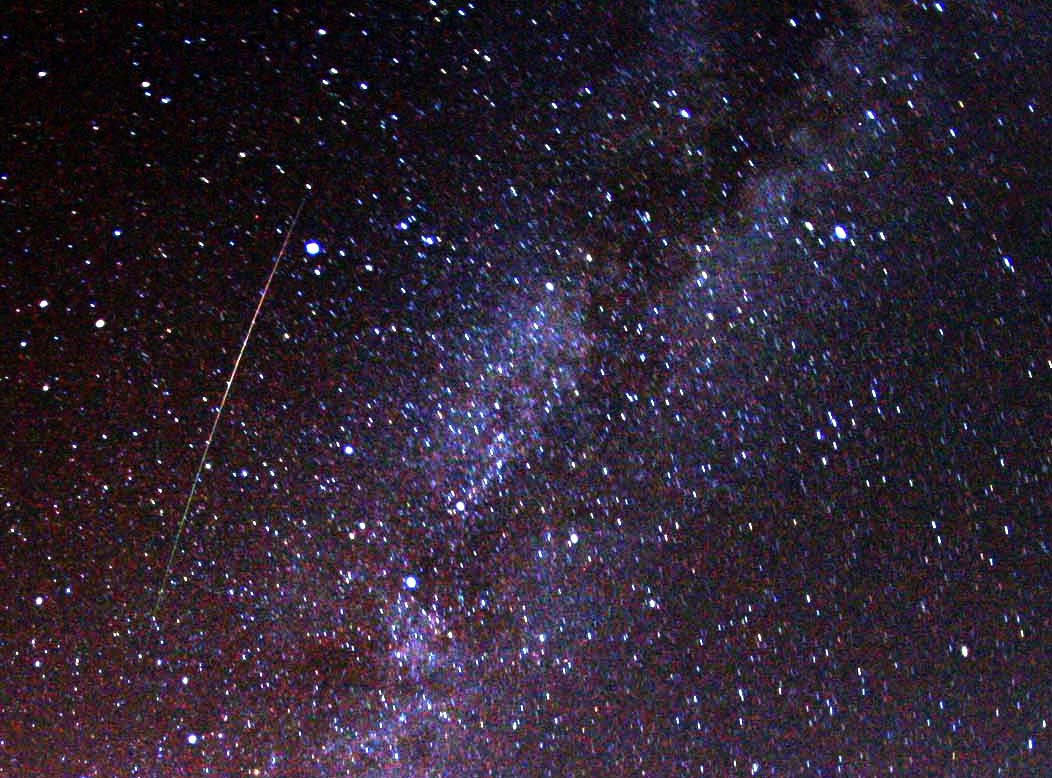Perseids Afterglow and U.S. Priorities for the Next Decade
Perseids Afterglow
The peak of the Perseid meteor shower may be past, but there is still plenty to see before this shower completely fades away for another year. If you missed the peak, here are some of the highlights which have been documented on the Web:
U.S. Priorities for the Next Decade
On Friday, August 13, the National Research Council (NRC) held a briefing to review their report identifying the highest-priority research activities for U.S. astronomy and astrophysics in the next decade. This is the sixth decadal survey of the NRC and it states that it will "set the nation firmly on the path to answering profound questions about the cosmos." The report prioritizes proposed activities based on their ability to advance science in key areas, and for the first time also takes into account factors such as risks in technical readiness, schedule, and cost.
The report identifies space- and ground-based research activities in three categories: large, midsize, and small. The large space activities are those exceeding $1 billion. The top priority in this category is an orbital observatory called the Wide-Field Infrared Survey Telescope (WFIRST). It is expected that this space telescope would help settle fundamental questions about the nature of dark energy, determine the likelihood of other Earth-like planets over a wide range of orbital parameters, and survey our Milky Way galaxy and others. The ground-based large-scale initiatives are those that that exceed a budget of $135 million. The first priority of these is the Large Synoptic Survey Telescope (LSST), a wide-field optical survey telescope that would observe more than half the sky every four nights, and address diverse areas of study such as dark energy, supernovae, and time-variable phenomena.
The recommended research activities are encapsulated by three science objectives: deepening understanding of how the first stars, galaxies, and black holes formed, locating the closest habitable Earth-like planets beyond the solar system for detailed study, and using astronomical measurements to unravel the mysteries of gravity and probe fundamental physics.
Along with WFIRST, other priorities in the large-scale space category recommended in the report are an augmentation to NASA’s Explorer program, which supports small- and medium-sized missions that provide high scientific returns; the Laser Interferometer Space Antenna (LISA), which could enable detection of long gravitational waves or "ripples in space-time"; and the International X-Ray Observatory, a large-area X-ray telescope that could transform understanding of hot gas associated with stars, galaxies, and black holes in all evolutionary stages.
Other recommended ground-based research projects include the formation of a Midscale Innovations Program within the NSF, which would fill a funding gap for compelling research activities that cost between $4 million and $135 million. In addition, the report recommends participation in the U.S.-led international Giant Segmented Mirror Telescope, a next generation large optical telescope that is vital for continuing the long record of U.S. leadership in ground-based optical astronomy. The next priority is participation in an international ground-based high-energy gamma-ray telescope array.
For midsize space-based activities, the first priority is the New Worlds Technology Development Program, which lays the scientific groundwork for a future mission to study nearby Earth-like planets. Top priority for ground-based midsize research is the Cerro Chajnantor Atacama Telescope (CCAT), which would provide short wavelength radio surveys of the sky to study dusty material associated with galaxies and stars.
Research priorities were selected through an extensive review that included input from nine expert panels, six study groups, and a broad survey of the astronomy and astrophysics community. With the help of an outside contractor, the committee developed independent appraisals of the technical readiness and schedule and cost risks. In addition, the survey reassessed projects that were recommended in past surveys but not formally started.
The research recommendations represent a cohesive plan with realistic budgetary scenarios, the report says, with ranges based on current projected budgets for NASA, NSF, and the U.S. Department of Energy -- the agencies largely responsible for funding and implementing the research activities. It also identifies smaller, unranked research initiatives to augment core fundamental research. An independent standing committee should regularly advise the agencies on strategy and progress of the projects and produce annual reports.
The report notes that astronomical research continues to offer significant benefits to the nation beyond astronomical discoveries by capturing the public's attention and promoting general science literacy and proficiency. In addition, the research serves as a gateway to science, technology, engineering, and mathematics careers, and a number of important and often unexpected technological breakthroughs. The report makes several recommendations to improve astronomy and astrophysics education and calls for more U.S. participation in international research projects.
Read the full report is available here:
http://www.nap.edu/catalog.php?record_id=12951
See the archived webcast is available here:
http://www.tvworldwide.com/events/nas/100813/
-


